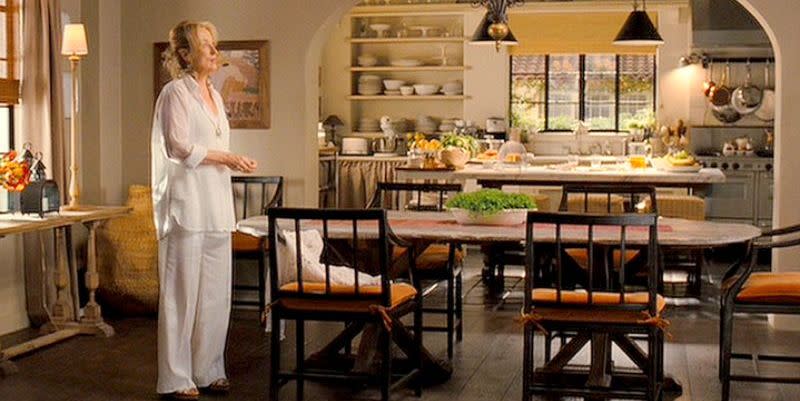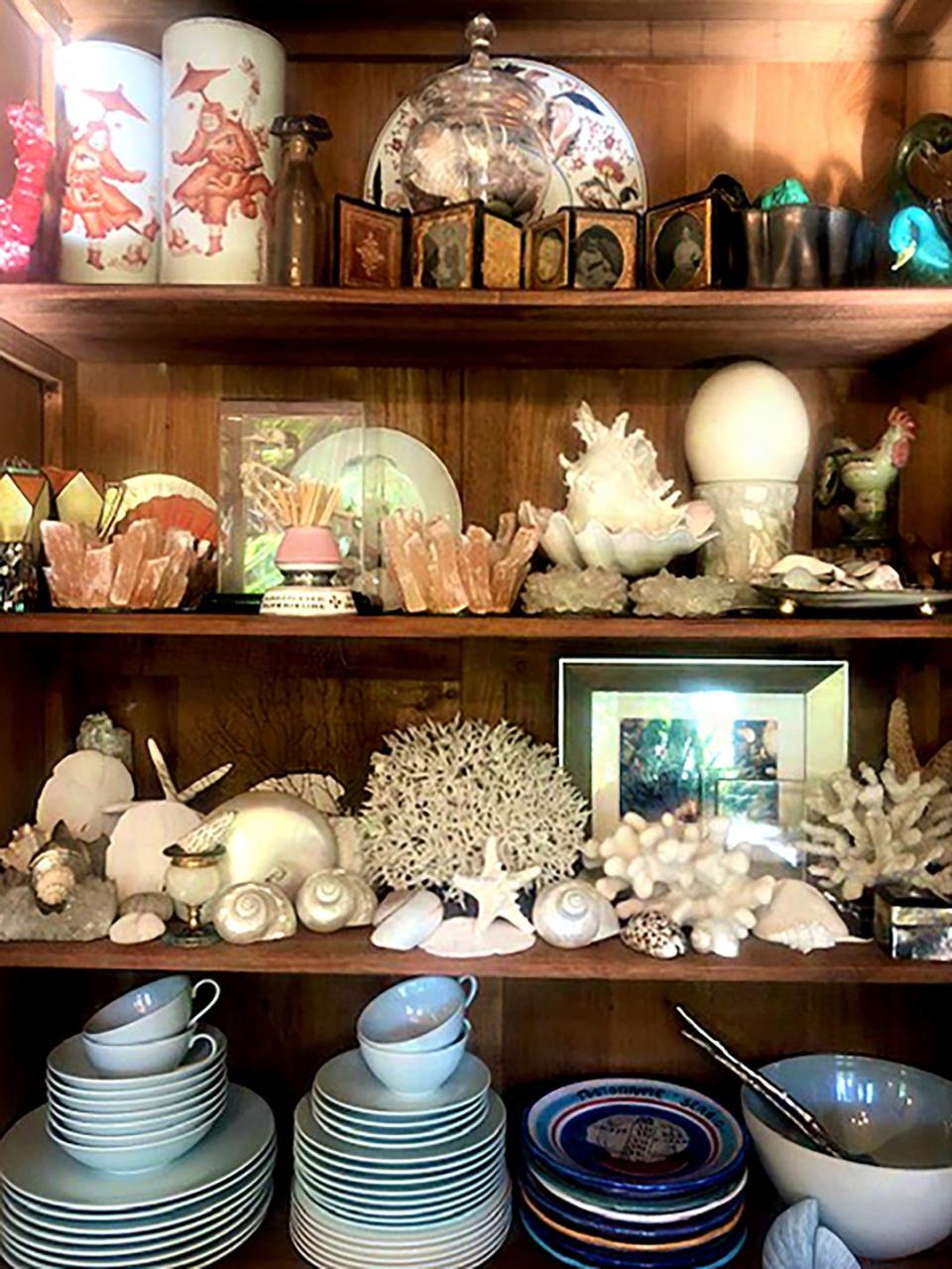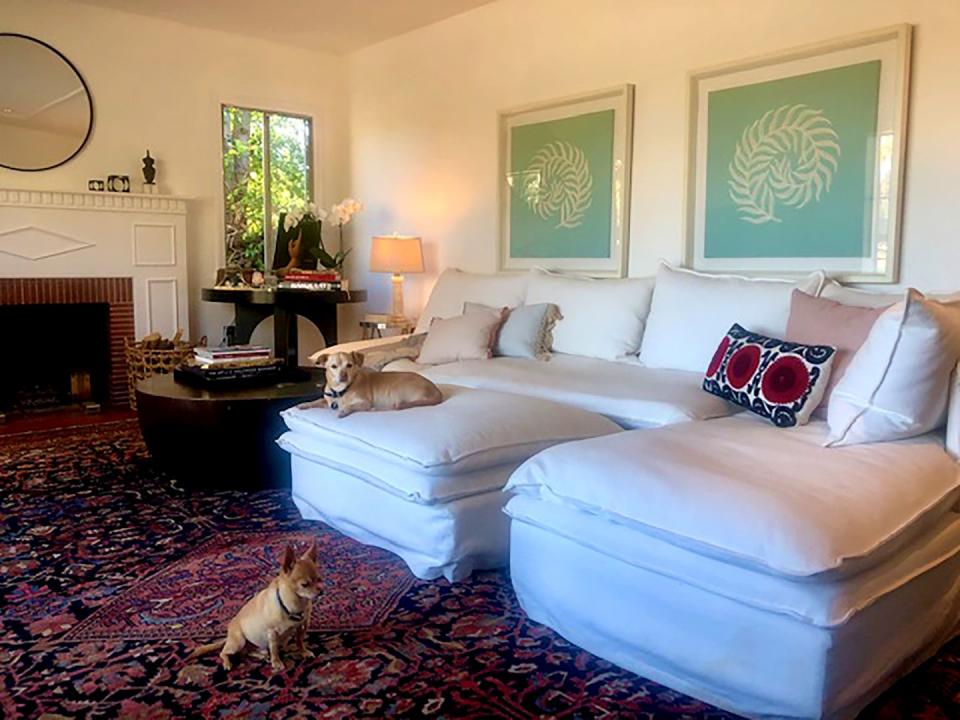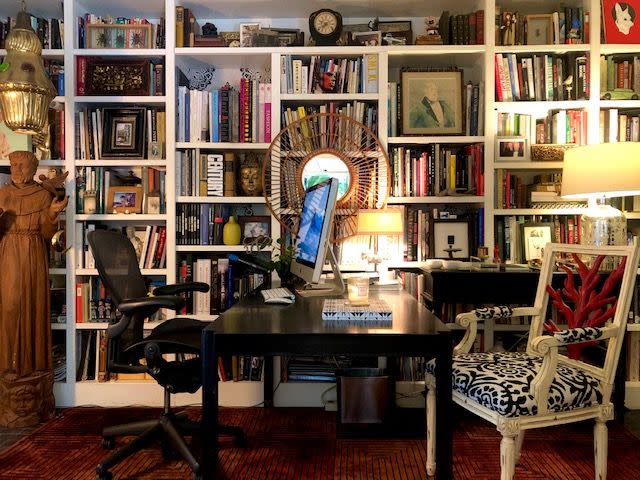Hollywood's Greatest Set Designers Share How They Decorate Their Own Homes

In the realm of film and television, the job of a set decorator is to source, design, and sometimes create the items that dress a set. They making sure that every object—from the furniture to the forks—is working in harmony to create a sense of place and character. Whether their mission is to deck out a tasteful California home, a Regency ballroom, or a haunted Gothic mansion, a set decorator’s specialty is making any set of circumstances come to life. But how do they approach decorating their own homes, when they’re free from having to follow a director’s vision? We spoke with four of the film industries most in-demand artists to get some easily applicable advice.
Start with a single key piece.
The whole idea for a particular room may come from one piece that you really love—and that doesn’t have to be a dominant piece of furniture or a huge piece of art. If you’re feeling overwhelmed by the choices in front of you, just start with one element that you know you want in the space, and go from there.

"It could be something as simple as a pillow or a vase" that "ignites" inspiration, says Claire Kaufman, who worked on 2019’s Oscar-nominated Little Women.
Stella Fox, who was the set decorator for 2020’s elegant and candy-colored Emma as well as last year's Judy Garland biopic, likes to pull complementary colors from her key piece. In her living room, it was a fabric that reminded her of a "huge oil painting."
"There’s a lot going on in the fabric, but I picked out the palette in that fabric for the rest of the room," she says.
Don’t feel beholden to one particular style or era.
In fact, your home will be even more chic—and much more interesting to look at — if you blend styles.
"Personally, everything I have is eclectic," says Beth Rubino. Now a production designer, one of her many projects as a set decorator was creating the enviable, cream-colored homes in the Nancy Meyers movies It’s Complicated and Something's Gotta Give. "And that’s because I don’t get locked into any specific period."
"It’s mixing it all together, layering up styles and textures that’s actually really successful," Fox says. "You have to actually be quite brave to do it, but just experimenting with it and seeing what works."
Contrary to what his resume might suggest to you, Shane Vieau prizes simplicity above everything in his home decor. The set decorator behind Best Picture winner The Shape of Water and blockbuster Suicide Squad says he prefers a clean palette—particularly bright, white walls—that enable you to experiment with mixing styles without overwhelming the room.
"You can constantly blend little things in that work for you, but if the background environment with your lighting and your walls and your moldings is clean and classic, everything kind of works," he explains.
Let your home be a scrapbook of your life.
"Being a set decorator, you tend to love a lot of stuff," says Vieau.
And you have access to a lot of stuff. From traveling the world on antiquing runs and buying trips to the set sales films will have after production ends, there’s ample opportunity to keep collecting.
"My home has definitely, over the years, become a collection," says Kaufman.
While the average person may not have pieces from some of Hollywood’s most gorgeous movies to pepper into their home, you can work in elements that have emotional value to you, whether it’s something that you picked up on a memorable vacation or had handed down to you from a beloved family member. Those pieces will drum up happier feelings for you when you look around your home than anything chosen purely for aesthetic value.
"There are always stories behind odd pieces on the mantelpiece," Fox says of her home. "They’re not random objects that I think would look particularly trendy."
And if you are someone who has a considerable collection of special objects and a storage space in which to keep them, rotating pieces regularly allows you to give all your favorites time to shine, without creating clutter.
Don’t sacrifice function for beauty.
"I am not a zealot to compromising comfort and function to design," says Rubino. "I feel a room that really is successful is one that you can be in, is comfortable to yourself and other people, and is always welcoming."

Kaufman agrees. "I was a kid who grew up [hearing], 'You’re not allowed to go in that room,'" she remembers. "I definitely never wanted to have that house, so I look for things that are durable and not fussy."
Function isn’t just about your ability to physically inhabit and move through a space, or even it being child- and pet-proof. Consider what you need to feel most serene, productive, or at home, and then design to that ideal.
"For me in my environment, I like to keep it as clean and as bright and as crisp as possible so that I think better," says Vieau. "I find it very calming and soothing."
Keep researching and experimenting.
Don’t wait until you’re working on a project to start defining your taste or seeing what’s out there. "I’m constantly researching, constantly have got my nose in magazines, books, the internet," says Kaufman.

Collecting inspiration may save you time down the line and ensure that you’re filling your space with items you adore—not just ones that suffice.
"I’ve had the great fortune of being able to, over a period of time, really find and highly curate pieces that I love, so they become the motivation of what happens to the room," Rubino says.
And you also don’t have to wait until you have the budget for a complete redesign to rejigger your space. The set decorators we spoke to see design as fluid, and recommend trying out different placement and shapes to see what works best for you and your home.
"I wish I could see a sped-up video of me in the house," laughs Fox, who likes to let a piece "breathe" before she ultimately decides where it should go.
And even then, what makes sense to you now might not five years down the line. "Style is always developing and always changing and maturing as well," she adds.
Follow House Beautiful on Instagram.
You Might Also Like

